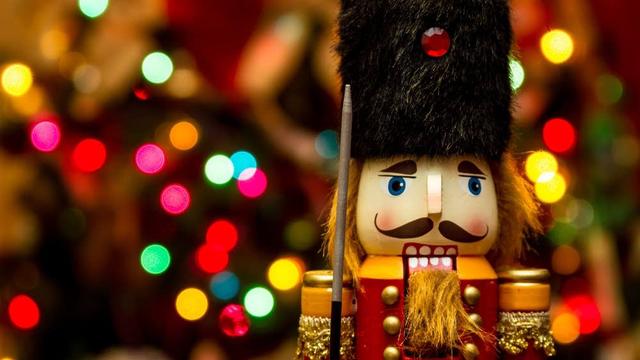Baila Blog, Ballet, Nutcracker, Ballet, Dancer, Dance
The Nutcracker: How its story conquered the world
The Nutcracker: How its story conquered the whole world
OR The story of a little girl at Christmas, her toy, the "Nutcracker" and his adventure in a fantasy kingdom full of dolls became a legend. Every winter, many different versions of the play are presented around the world. In America alone, a different version is presented in each state.
The Nutcracker is an integral part of Christmas, claims the Melissa Hamilton, first dancer of the Royal Ballet of England.

OR story began when the famous 19th century writer and philosopher, E.T.A. Hoffman created the story “The Nutcracker and the Mouse King” (1827). However, it was the lighter and more childlike version that was presented in 1844 by the French writer Alexandre Dumas and was used as the basis for the creation of the ballet in two parts. The first part describes a Christmas party, at which Clara receives a magical Nutcracker as a gift from Dosselmeyer, her wizard-toymaker godfather. That same night, the Nutcracker, after defeating the mouse king, transforms into a prince and leads Clara to the imaginary kingdom. In the second part, they learn about the colorful shelter located within the kingdom, as well as the forest fairy.
EAfter the success of "Sleeping Beauty" in 1890, it was commissioned by Marius Retipa the choreography and in Pyotr Ilyich Tchaikovsky the music of the work. When Retipa fell ill, the work was continued by his assistant, Lev Ivanov. Retipa had given Tchaikovsky detailed instructions on the music he should compose for the dances in the work. He wanted the fairy to sound “like drops of water coming out of a spring.” So Tchaikovsky incorporated the sweet, heavy sound of the celesta, a new instrument of the time that sounded like bells. When The Nutcracker was first performed in St. Petersburg on December 18, 1892, it was not warmly received by the audience. Although the music was considered a success, the work was criticized for its strange plot and seemingly disjointed scenes that resembled pantomime. It was also criticized for being more like a spectacle than a ballet, as well as for the absence of children’s roles.
MLater productions tried to overcome these criticisms. In 1919 the Alexander Grovsky, a Russian choreographer combined the roles of Clara and the fairy and recreated the story of a romantic idyll. In 1934 the Vasily Vainonen went even further, attributing the entire play to a dream of Clara's in order to explain the imaginary events that were taking place. Even today, the different versions vary, regarding the individual elements of the plays. How the story ends, even Clara's name itself, varies from production to production. O George Balanchine took The Nutcracker to a higher level with the work he created for the New York City Ballet. This version of the ballet was not the first to be performed in America, but it was the most famous and the first to be broadcast on television. From 1954 to the present, this version has been performed every year in New York. It was also this version, by Balanchine, that reversed the initial negative reviews. In the second half of the 20th century, the production of The Nutcracker exceeded its limits.
THE Rudolf Nureyev and the Yuri Grigorovich choreographed productions for the Royal Ballet and the Bolshoi in the 1960s. Another milestone in the history of the work is the monumental production of Peter Wright for the Royal Ballet, in 1984, which is still performed today, with Peter Wright, 91, still making additions and changes today.
OR The play’s reach has grown even more with live streaming. Over 1,000 cinemas showed the play in 2016 around the world. Part of the play’s great appeal is its setting: audiences respond to the romantic ideal of a giant Christmas tree, snowy landscapes, candy and gifts. But what has led to The Nutcracker’s universal acceptance is its easy adaptation to different cultures. In its Chinese version, The Nutcracker features a “bird goddess” as a character instead of a forest fairy and dragons instead of mice. In its South African version, the play takes place in the Kalahari Desert, incorporating elements of local dances and circus. It was recently performed by the Hawaiian Ballet, with the “snow scene” taking place on the summit of Mauna Kea in Hawaii. The “waltz of the flowers” is danced among hibiscus, orchids, and flower crowns.
THE Septime Weber, choreographer of the Hawaiian Ballet, argues that the language of The Nutcracker is more metaphorical, which explains why "The Nutcracker" has proven so versatile as "a framework and setting in which a young girl's dreams are conveyed." But it's also because adaptation has been part of The Nutcracker's story from the beginning. The original version of the play has allowed for endless revisions and additions over the years, but it is also a tradition-maker, as the best new ideas are rewarded by being adopted and reproduced again and again.
THE “The Nutcracker” began as a Russian ballet that didn’t get good reviews. Since then, it has been modified, refined, and redefined, becoming the “perfect canvas” on which to they are sewn Christmas dreams..
Source: economist.com

